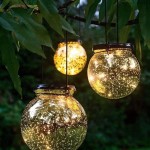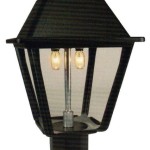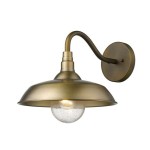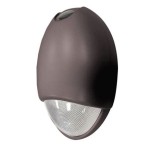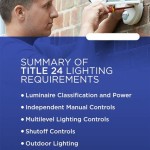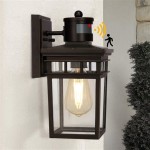How To Hang Outdoor Garden Lights
Outdoor garden lighting enhances the beauty and functionality of any outdoor space. Properly installed lights can highlight landscaping features, illuminate pathways for safety, and create a welcoming ambiance for evening gatherings. This guide provides comprehensive instructions for hanging various types of outdoor garden lights.
Planning the Layout
Before purchasing any lights, careful planning is essential. Consider the specific areas that require illumination, such as walkways, patios, or focal points in the garden. A well-designed lighting plan enhances the overall aesthetic appeal and safety of the space. Measure the distances to determine the necessary cable length and the number of lights required.
Choosing the Right Lighting
A variety of outdoor garden lighting options are available, each offering unique benefits. String lights provide a festive atmosphere, while spotlights can highlight specific plants or trees. Path lights guide visitors safely along walkways and driveways, while lanterns offer a classic, decorative touch. Solar-powered lights are an environmentally friendly choice, eliminating the need for wiring. Select lights that complement the garden's style and meet the intended purpose.
Essential Tools and Materials
Gathering the necessary tools and materials beforehand streamlines the installation process. Essential items include a ladder, measuring tape, wire cutters, electrical tape, exterior-grade electrical wire, and the chosen lighting fixtures. If installing low-voltage landscape lighting, a transformer will be necessary. For hanging string lights, hooks, clips, or guide wires might be required. Always consult the manufacturer's instructions for any specific tools or materials.
Safety Precautions
Safety is paramount when working with electricity. Before starting any installation, turn off the power to the circuit that will be used for the outdoor lights. Use exterior-grade wiring and fixtures designed for outdoor use, ensuring they are weatherproof and rated for the intended voltage. When working with a ladder, ensure it's placed on a stable surface. If uncertain about any electrical work, consult a qualified electrician.
Installing Low-Voltage Landscape Lighting
Low-voltage landscape lighting usually requires a transformer to convert standard household voltage to a safer, lower voltage. The transformer should be placed in a dry, accessible location. Run the low-voltage cable from the transformer to the desired locations for the lights, burying it shallowly underground or concealing it along existing structures. Connect the lights to the cable according to the manufacturer's instructions. Once the connections are secure, turn the power back on to the transformer.
Hanging String Lights
String lights can be draped across trees, fences, or pergolas. Use hooks, clips, or guide wires to secure the lights in place, ensuring they are spaced evenly. If using hooks, screw them into sturdy surfaces that can support the weight of the lights. Avoid stapling or nailing the wires directly, as this can damage them. Plug the string lights into an exterior-grade GFCI outlet.
Installing Wall-Mounted Lights
Wall-mounted lights add a touch of elegance and provide targeted illumination. Choose a location that complements the architectural style of the house and provides the desired lighting effect. Turn off the power to the circuit before starting any electrical work. Attach the mounting bracket securely to the wall, ensuring it is level. Connect the wires from the light fixture to the electrical wiring in the wall, following local electrical codes. Mount the light fixture to the bracket and restore power to the circuit.
Installing Post Lights
Post lights define pathways and enhance security. Ensure the posts are securely installed and level. Run the electrical wiring through the post to the light fixture. Connect the wires according to the manufacturer's instructions. Mount the light fixture to the post and restore power.
Maintenance and Troubleshooting
Regular maintenance ensures the longevity and optimal performance of outdoor garden lights. Periodically inspect the lights for damage or wear, replacing any faulty components promptly. Clean the lenses and fixtures to remove dirt and debris that can obstruct light output. Check the wiring connections for tightness and ensure they are protected from moisture. If any lights fail to operate, check the bulbs, wiring, and connections before consulting a professional electrician.
Choosing Energy-Efficient Options
Energy-efficient lighting options reduce electricity consumption and contribute to environmental sustainability. LED lights consume significantly less energy than traditional incandescent bulbs and have a much longer lifespan. Solar-powered lights are another eco-friendly choice, harnessing the sun's energy to power the lights. When selecting lights, consider the lumens output, which indicates the brightness of the light, to ensure adequate illumination while minimizing energy usage.

How To Hang Patio Lights

24 Backyard Lighting Ideas How To Hang Outdoor String Lights

How To Hang Outdoor String Lights The Ultimate Guide Jessica Welling Interiors

How To Hang Patio Lights

How To Hang String Lights Outdoors

How To Hang Outdoor String Lights The Ultimate Guide Jessica Welling Interiors

How To Hang String Lights On Aluminum Pergola A Garden Diary

How To Hang Patio Lights Yard Envy

How To Hang Outdoor String Lights Thrifty Decor Diy And Organizing

5 Quick Tips To Hang String Lights Outdoors
Related Posts
